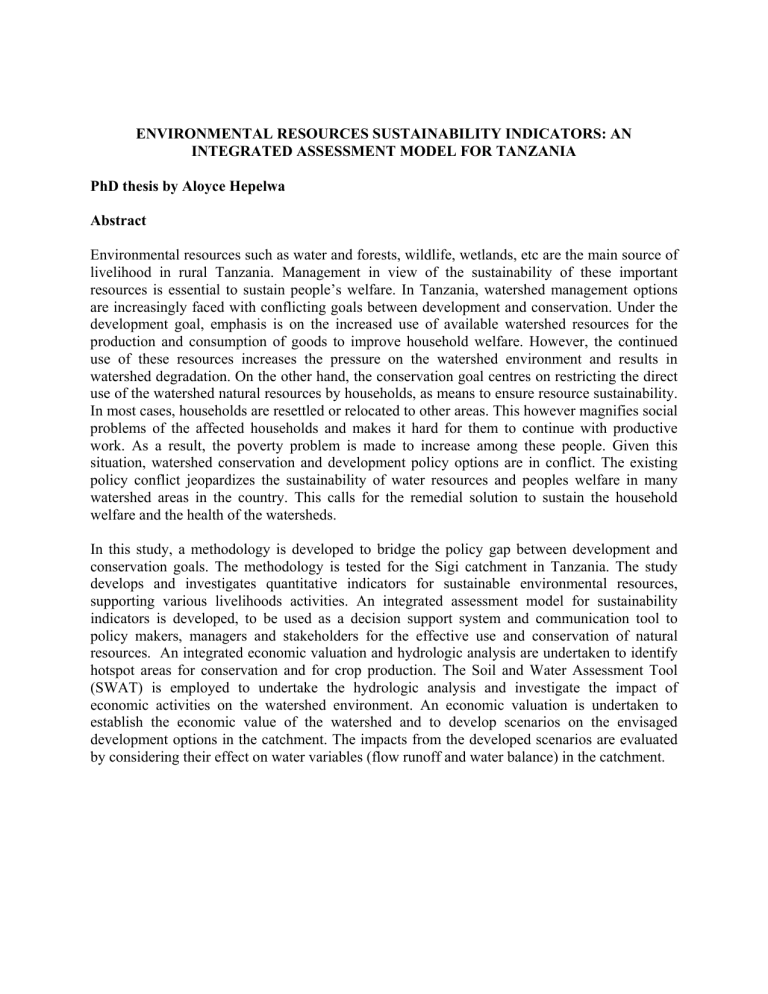
ENVIRONMENTAL RESOURCES SUSTAINABILITY INDICATORS: AN
INTEGRATED ASSESSMENT MODEL FOR TANZANIA
PhD thesis by Aloyce Hepelwa
Abstract
Environmental resources such as water and forests, wildlife, wetlands, etc are the main source of
livelihood in rural Tanzania. Management in view of the sustainability of these important
resources is essential to sustain people’s welfare. In Tanzania, watershed management options
are increasingly faced with conflicting goals between development and conservation. Under the
development goal, emphasis is on the increased use of available watershed resources for the
production and consumption of goods to improve household welfare. However, the continued
use of these resources increases the pressure on the watershed environment and results in
watershed degradation. On the other hand, the conservation goal centres on restricting the direct
use of the watershed natural resources by households, as means to ensure resource sustainability.
In most cases, households are resettled or relocated to other areas. This however magnifies social
problems of the affected households and makes it hard for them to continue with productive
work. As a result, the poverty problem is made to increase among these people. Given this
situation, watershed conservation and development policy options are in conflict. The existing
policy conflict jeopardizes the sustainability of water resources and peoples welfare in many
watershed areas in the country. This calls for the remedial solution to sustain the household
welfare and the health of the watersheds.
In this study, a methodology is developed to bridge the policy gap between development and
conservation goals. The methodology is tested for the Sigi catchment in Tanzania. The study
develops and investigates quantitative indicators for sustainable environmental resources,
supporting various livelihoods activities. An integrated assessment model for sustainability
indicators is developed, to be used as a decision support system and communication tool to
policy makers, managers and stakeholders for the effective use and conservation of natural
resources. An integrated economic valuation and hydrologic analysis are undertaken to identify
hotspot areas for conservation and for crop production. The Soil and Water Assessment Tool
(SWAT) is employed to undertake the hydrologic analysis and investigate the impact of
economic activities on the watershed environment. An economic valuation is undertaken to
establish the economic value of the watershed and to develop scenarios on the envisaged
development options in the catchment. The impacts from the developed scenarios are evaluated
by considering their effect on water variables (flow runoff and water balance) in the catchment.

